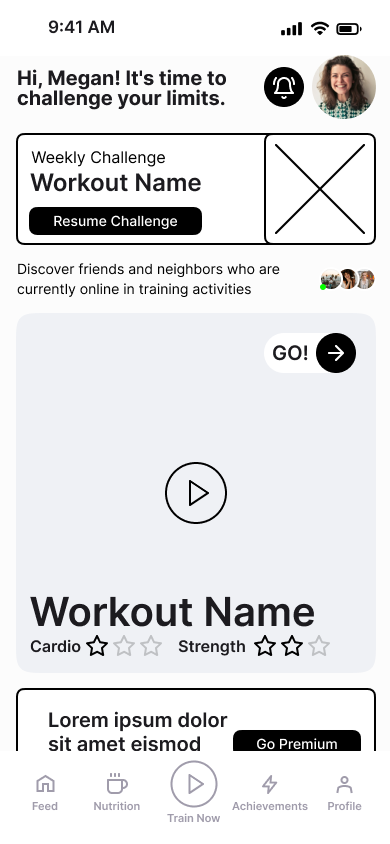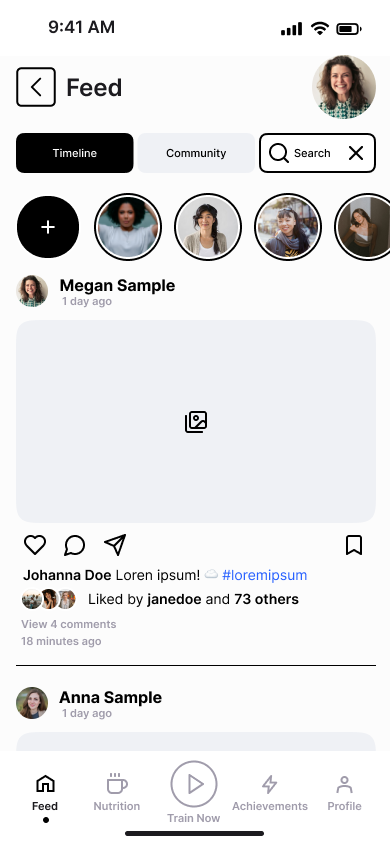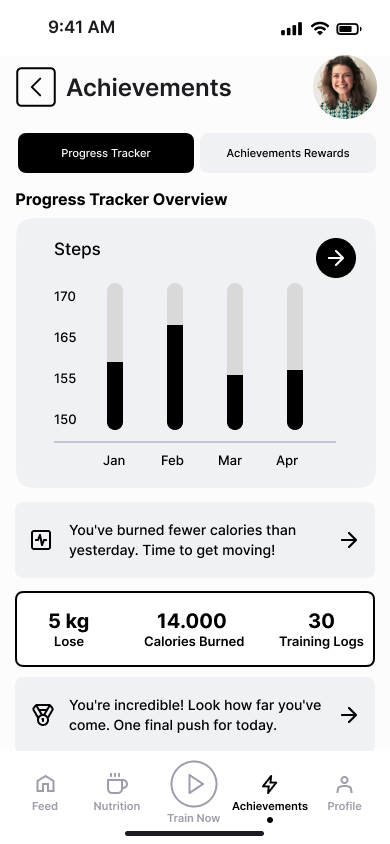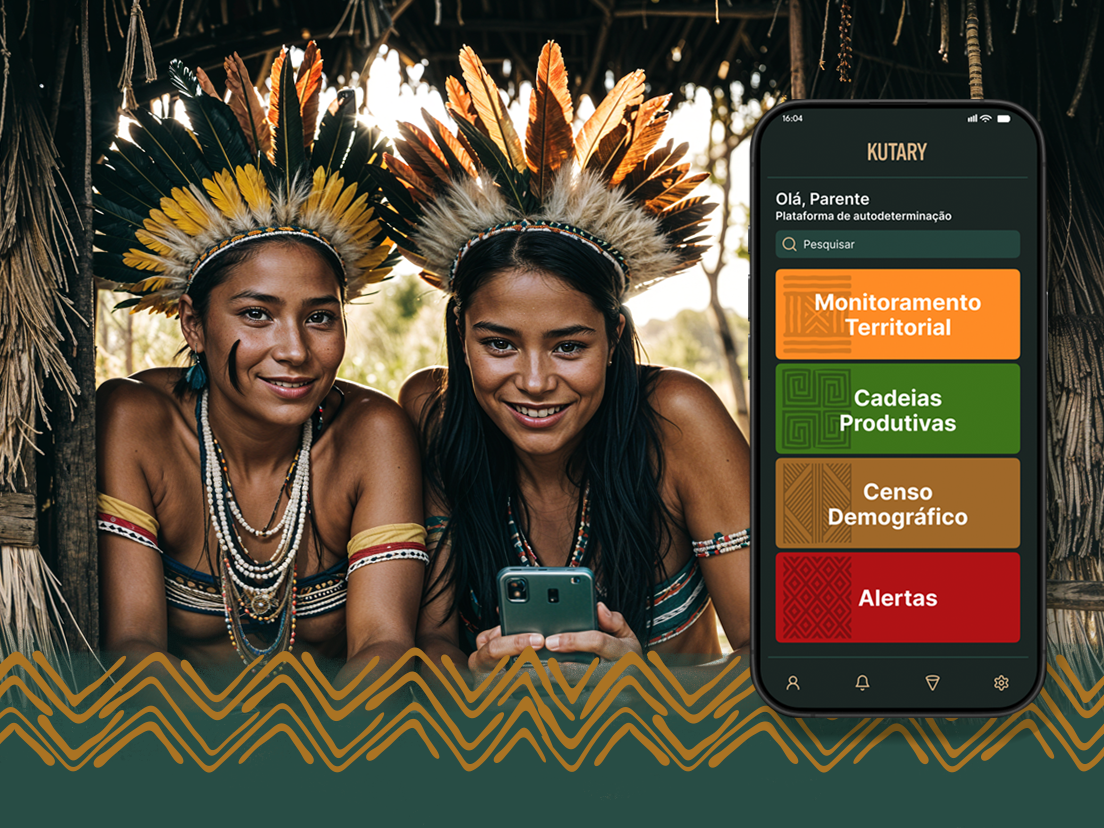Situation
Background
I joined this project that was inspired by the community of mothers and postpartum women whose lives were transformed by motherhood. This community suffers from a lack of time for themselves, loneliness, and a lack of mental space for activities that are not linked to raising their children. The first idea was to examine ways to open up time for calm, self-care, and exercise, through a personalized experience adapted to the mother’s profile. Prepare users for long-term success in their training choices. Through research, the team discovered that in addition to personalized training, users would also like to get closer to those who are at the same moment in life, to exchange experiences and motivation, when training together - even if remotely.
Goals
Creation of an end-to-end application that allows the user to obtain training recommendations adapted to preferences and physical conditions, resulting in a moment in which the mother can have time to take care of her own health and be part of a group of other women at the same moment in life.
Problem
Selecting an exercise app can be overwhelming and lead to choices of apps that are irrelevant to the user’s physical/mental condition, causing wasted budget and abandonment of training. As training requires lasting motivation, part of making it successful is adapting it to your personal space, preferences, and schedule conditions. Part of the problem is the spontaneity factor in downloading fitness apps, without a specific purpose, which contributes to poor decision-making.
My Impact
For this project, I validated the need for the original product and leveraged the research data to create an end-to-end product, as a brand designer and UX/UI designer (member of a design team).
Tasks
Research
Below are the areas the team would like to explore during the user research.
We want to understand:
We want to understand:
• The patterns behind the fitness app program subscriptions;
• What are the user’s motivations behind specific fitness apps;
• The context in which the users seek information on fitness and healthcare;
• The user’s goals when searching for fitness and motherhood information.
• What are the user’s motivations behind specific fitness apps;
• The context in which the users seek information on fitness and healthcare;
• The user’s goals when searching for fitness and motherhood information.
Methodologies:
Secondary research on top products related to fitness to determine the gap in the market.
In-depth user interviews with 6 recent mothers who started to workout and want to stay motivated to do so and validate the assumptions the team has about the healthcare and exchange habits.
In-depth user interviews with 6 recent mothers who started to workout and want to stay motivated to do so and validate the assumptions the team has about the healthcare and exchange habits.
User Interviews
The team was not surprised to learn that most of the fitness app users tend to make spontaneous decisions that are influenced easily by external factors, such as what they see on their social media feed, all sorts of digital ads or downloads based only on curiosity, without a better idea of what they’re looking for. Friends influence with informal review or activity notifications is also mentioned. This led me to discover that what would help the users to set themselves for long-term success, would be to help them make informed decisions before the purchase.
Define
User Persona:
After I compiled the outtakes from the research into the affinity map, I was able to create a persona that represents the main user group.
User Scenario:
After creating my persona, I decided to place her in a specific situation where she could use the product. The primary use case was inspired by synthesized research from the user interviews, competitive analysis showing the niche in the market, and a persona I could fully empathize with.
The MVP allows to make informed decisions before downloading an app and purchasing a workout plan to set the user for long-term success by matching a plan with their needs and health conditions and allowing the user to minimize spontaneous unfortunate purchases, thus saving the budget.
Ideation
Feature Prioritization:
After realizing what solution would bring the most value to my users, I decided to take it a step further and brainstorm ideas for the actual features. I want the app to be easy to use on the go while working out - it requires an easy interface, streamlined onboarding, and access to the main feature. The research part provided me with enough info to determine which features will bring low vs. high value to the user.
Insights
Tasks Flow
After having defined the features of the app, I created flows for the main tasks.
User Flow:
Launch the app to see if the plan/program is a good match
This user flow assumes the user is using the app for the first time:
This user flow assumes the user is using the app for the first time:
Task:
Check on the training progress, based on the goal selection:
App Navigation:
Based on the user flow, task flows and feature roadmap, I designed the simple app map that’s functional and easy to navigate.
Actions
Lo-fi Wireframes
The first version of lo-fi wireframes allowed me to run early usability tests and discover the priority revisions that need to be implemented ASAP. That decreased the number of iterations to the later versions with all effort being put into creating the hi-fi interface.

Onboarding Page

Home/Welcome Page

Feed Page

Nutrition Page

Train Main Page

Achievements Page

Profile Page
Brand Guidelines
I created the UI kit that reflects 4:30 brand adjectives. As the name of the app is 4:30, it helps the user get ready to work out early in the morning.
Mockups & Prototype
Results & Outcomes
While working on the 4:30 project, I learned to trust the research and discovery process as I started working on it with a very different assumption and initial idea on how to solve the problem. In the end, I needed to satisfy different user needs, which weren't, in fact, the vast options of fitness apps, but the users' health conditions, in the first place. I learned not to get too hung up on the solution and to be flexible with the ways of solving the problem. It's great to have the general ideas and inspirations - the process of the idea evolution can take us much further. Creating a virtual gym spot (the original idea) can be developed with more time and resources. I believe that minimizing the lack of time and loneliness related to motherhood, and motivates users for long-term success in their training programs.
Stakeholders proudly approved this project, securing funds and giving the green light to commence. Currently, it's in the development phase.


